#colonialism during the Vietnam war so so well and added a lot to his character imo. his 90s cap miniseries genuinely is some of the best
Text
I think the more comics I read, the more I realize I love a tasty little miniseries. Short, right to the point, not a billion issues, and I feel often do more experimental ideas with the characters. I love you miniseries
#twist rambles#post bc i just think about how good nicieza does w his miniseries. like. hear me out ok. his 90s Hawkeye miniseries tackled war and +#colonialism during the Vietnam war so so well and added a lot to his character imo. his 90s cap miniseries genuinely is some of the best#comics ive ever read. there's so many good miniseries but seriously i think more ppl need to hype him up. esp when hes good#which is not all the time let it be clear. but anyways. I love u mr nicieza i owe u my life forever for doing seriously awesome stuff#also some of the dare/devil miniseries r rly good... aughhh I love miniseries
4 notes
·
View notes
Text
6,000 Years of Murder – Part Six: Things Fall Apart

Tim: The Wicked + The Divine #36 finally gave us a definitive list of every damn Recurrence that has occurred since Ananke first started exploding heads, so we thought we’d take a walk through the annals of history and provide some context for what was happening at the time. Welcome to 6,000 Years of Murder.
Our sixth octet of Recurrences bridges the gap between BC and AD, and sees two great powers rise, in the form of the Han Dynasty and the Roman Republic, only for them to crumble into bloodshed and chaos. Feels like an appropriate arc for WicDiv, no?

188BC – Eastern China
When we last left China, the Zhou dynasty was starting to crumble back into a series of smaller territories, but since then, the Qin imperial dynasty has reunited the country. Now, we’ve begun the Han dynasty, considered a golden age in Chinese history, with China’s majority ethnic group still calling themselves the ‘Han Chinese’ and modern Chinese script often referred to as ‘Han characters’. 188BC sees Emperor Hui of Han die aged just 22 (maybe he was in the Pantheon?) and his domineering mother Empress Dowager Lü take the throne, having already been the power behind it.
Also occurring since we last checked in on China? The birth, life and death of Confucius, one of China’s most influential philosophers. His teaching, which emphasised personal and state morality, justice, sincerity and social harmony, will form one of the central schools of thought for the rest of China’s history. It emerged during a period called the Hundred Schools of Thought, a time of great cultural and intellectual expansion that occurred during the Warring States era. Alongside Confucianism, important Chinese philosophies like Taoism and Legalism were also developed, and their interplay will shape China for centuries to come.
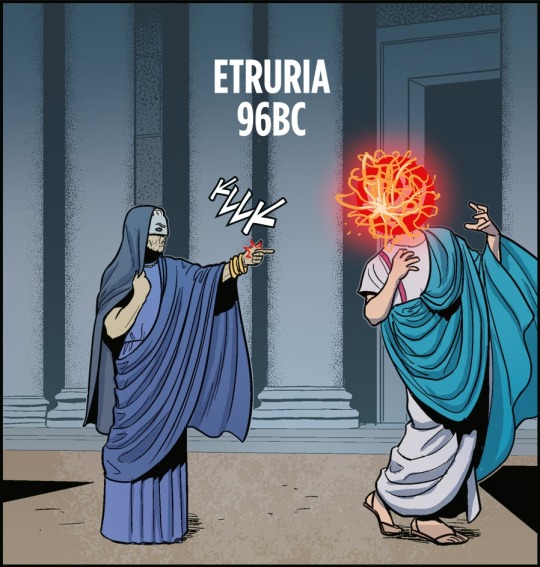
96BC – Etruria
The Roman Republic has been chugging along for around 300 years at this point, so we should probably pay some attention to it. As the name suggests, Rome is still a republic at this point, controlled by a Senate and giving at least the tip of a hat towards the notion of democracy popularised by the Greeks. However, little Julius Caesar, currently four years old, will soon put an end to that and transform the already successful republic into an Empire that will conquer much of Europe, the Middle East and beyond.
It’s worth noting that this Recurrence doesn’t take us to Rome itself but Etruria, the cradle of an earlier culture in Northern Italy that was assimilated into the Roman Republic around 300 years earlier. I couldn’t nail down a concrete reason for this choice, but my current working theory is that, as one of the first cultures absorbed into Rome, Etruria represents the way that the Empire will go on to suck in and process so many of the surrounding civilisations.

4BC – Judea
When a series is focused on humans ascending to godhood throughout history, cultivating great followings and bringing about change before dying young, it makes sense that we ended up in Judea in time for Jesus’ birth (yes, contrary to what you’d think, Jesus was born between 6-4BC, to allow Herod to be King upon his birth). As you can imagine during this period, despite travelling almost 1,500 miles from our last Recurrence, we haven’t outpaced the Romans, who annexed Judea in 63BC, shortly before transforming from a republic into an empire.
Herod was designated “King of the Jews” shortly after the Roman conquest, gaining military control in 37BC. He dies just as we visit, in 4BC, and will split Judea up amongst his sons, who are largely inept and rejected by the people in favour of more direct Roman rule. Even then, Jews living in the province still maintained some form of independence, able to judge offenders by their own laws. This independence was also the root of several rebellions that brewed in the area over the next 150 years, eventually resulting in the Romans renaming large areas to try to erase the historical ties Jewish people had to the region. That didn’t really go over very well.
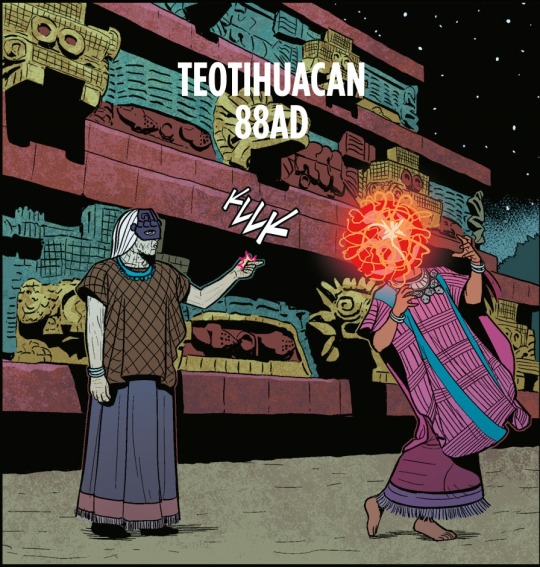
88AD – Teotihuacan
We’ve crossed over into Anno Domini - the numbers start going up from here! To celebrate, let’s take a trip to the largest city in the pre-Columbian Americas and the sixth largest city in the world: Teotihuacan. Located in a sub-valley of the Valley of Mexico, and just 25 miles from modern-day Mexico City, this metropolis boasted advanced building techniques including multi-storey residential blocks. Like other Mesoamerican sites, the urban planning was incredibly precise, oriented to the progression of the sun and stars, making the entire city a living calendar.
Quite who constructed Teotihuacan is unknown. Archaeological evidence suggests it was a multi-ethnic city, with distinct quarters occupied by the Otomi, Zapotec, Mixtec, Maya and Nahua peoples. Originally, it was presumed that the Toltecs were behind initial construction, based on colonial-era texts that quote Nahuatl-speaking Aztecs. However, the Nahuatl word “toltec” means “craftsman of the highest level”, and so might not refer specifically to the Toltec civilisation. It’s now generally assumed that settlement began around 300BC by the Totanac people, with the city reaching its zenith around 450AD.
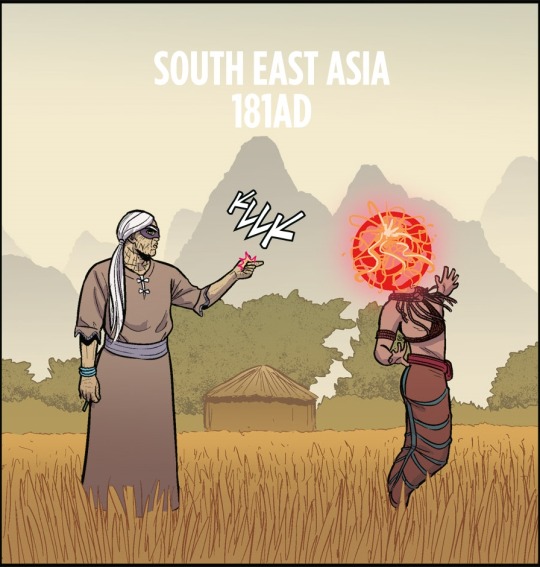
181AD – South East Asia
So far, our dalliances in Asia have mostly been centred on modern-day India and China, but that leaves large areas unaccounted for. Merchants throughout the region are busy establishing the Silk Road to China, but trade is also occurring via sea, taking you close to the Mekong Delta in present-day Vietnam. Right now, that area is part of the Funan network of states. Like Teotihuacan, modern understanding of Funan and the people that founded it is heavily debated. A lot of evidence, including the name we give it, comes from a single report by two Chinese diplomats, and given that China was often trying to conquer this part of the world, should be taken with a pinch of salt.
There’s a boss-ass folktale surrounding the region’s founding which involves a genie, a magic bow and a snake princess, but we can probably (unfortunately) also file that under “dubious”. What we do know is that Roman, Chinese and Indian goods have all been excavated in the area, suggesting a truly powerful trading centre. The Mekong Delta was perfect for both rice cultivation and fishing, further helping the area’s economy, and tactical conquests and colonies meant that at points, the kingdom controlled the entire trade route from Malaysia to central Vietnam.
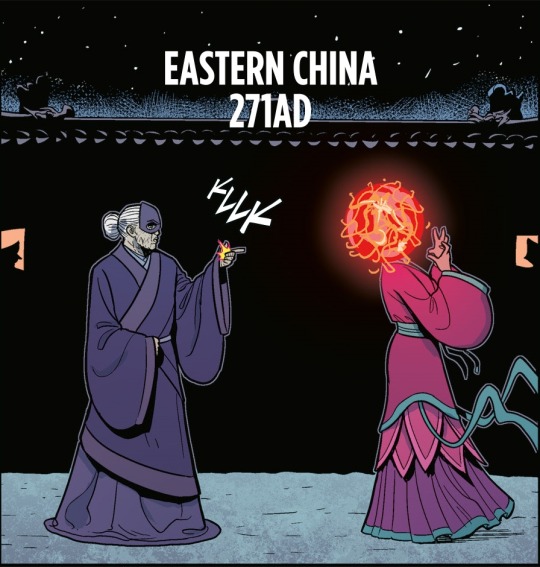
271AD – Eastern China
The Han period in China may have had a massive impact that continues to today, but it had to end at some point, that point being around 220, not long after the awesome Battle of Red Cliffs (see the great John Woo film starring Tony Leung for more details). Prior to this, there was already considerable infighting between various kingdoms and warlords as the Han dynasty weakened, and with it dissolved, we reach the Three Kingdoms period - a slight misnomer given that each of the states (Wei, Shu and Wu) had an emperor claiming the right to rule over all of China. By 271, the Shu have already conquered by the Wei, who shortly afterwards are usurped by the Jin dynasty, and in 280, the Jin will conquer the Wu, reuniting China.
While the Three Kingdoms period may only less than 100 years, from the Han Dynasty weakening to the Jin emerging triumphant, this period is the most bloodthirsty in the country’s history. As much as 60 per cent of the population may have been killed due to high conscription levels, brutal massacres and widespread famine. Despite this, the period also saw considerable advances in technology, include improvements on the repeating crossbow, mechanical puppet theatres and non-magnetic compasses that used differential gears. Still, Ananke’s visit seems remarkably tranquil for such a period of upheaval.
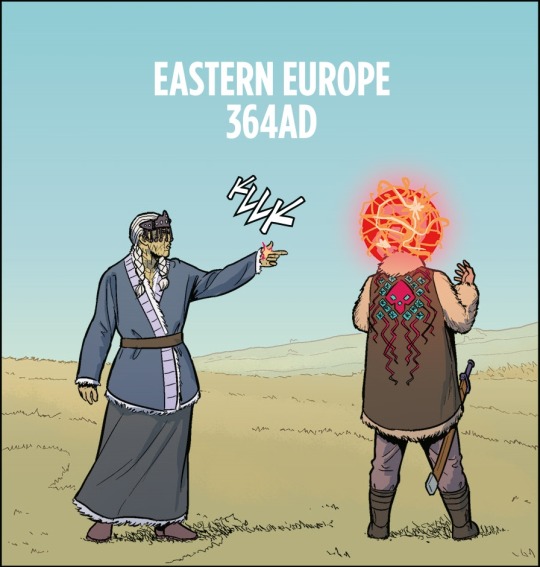
364AD – Eastern Europe
The Roman Empire is still doing its thing, but change is on the horizon. Constantine has ended the persecution of Christians after converting, and has shifted the Roman capital to New Rome AKA Constantinople to be closer to his rivals the Sassanid Empire. Meanwhile, out in Central Asia, the Caucasus and Eastern Europe, a number of nomadic warrior tribes have formed a loose confederation called the Huns. While their best known leader Attila won’t be born for another 40 years, they are doing their best to disrupt things for both the Sassanids and the Romans, attacking settlements across Eastern Europe.
The Huns attacks didn’t come out of nowhere - it’s likely that the El Niño Southern Oscillation caused a megadrought in Inner Asia, causing them to migrate to the edges of their own lands. Whatever caused their sudden attacks, they terrified the Romans, who associated them with the Antichrist and Gog and Magog (whom Alexander the Great had captured behind mountains, according to legend). Those superstitions probably weren’t helped by a massive earthquake that hit the Eastern Mediterranean the year after our visit, destroying parts of Crete, Greece, Egypt, Libya, Sicily and Cyprus.
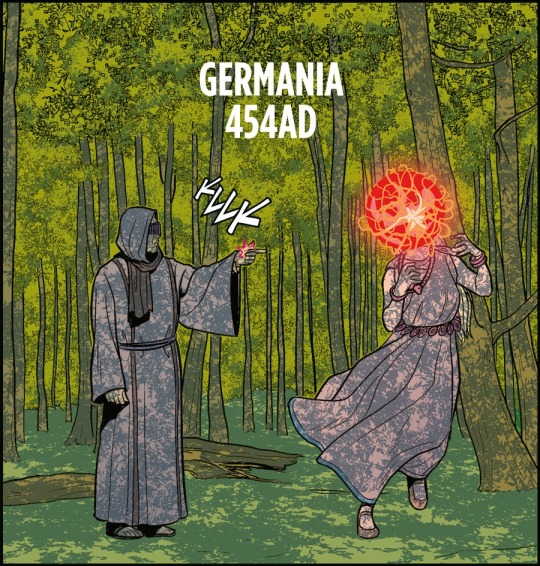
454AD – Germania
Our first Recurrence that we’ve seen before, in the 455 Special. Persephone’s death takes place the year before the Roman Lucifer went all “meat-harpy”, and her placement in Germania suggests she may have been part of the Vandals, who we see invading Rome in the Special, rather than a Roman citizen like Lucifer and Bacchus. By this point, the Roman Empire has split in two following the death of Theodosius I, with the Eastern part to remain going as the Byzantine Empire, and the Western part (where we are) soon to fall.
Rome, as we find it, is beset on all sides. In the East, our old friends the Huns are attacking, Attila having just died and divided the Empire among his sons. The Visigoths are sometimes allies and sometimes enemies, depending on what they can get away with. Anglo-Saxons are settling Britain, and in Germania, tribes including the Suebi, the Alans and the Vandals have been ransacking towns and establishing their own kingdoms. The Vandals, led by Genseric (who also appears in the Special) establish a kingdom that includes Corsica, Malta and parts of Africa, and while originally thought to be part of the destruction of Rome, are now thought to have acted as inheritors of many Roman traditions. They’ve certainly inherited Ananke’s efficiency at disposing of heads.
Like what we do, and want to help us make more of it? Visit patreon.com/timplusalex
43 notes
·
View notes